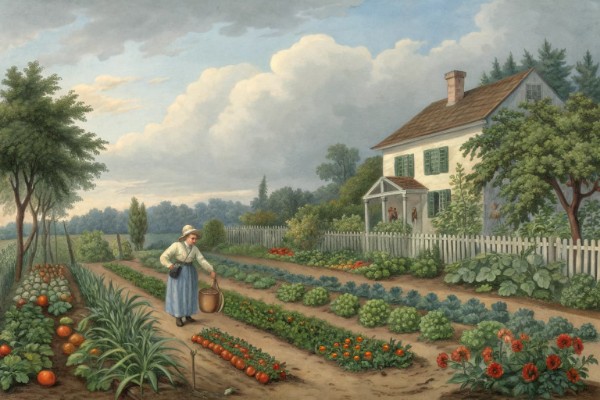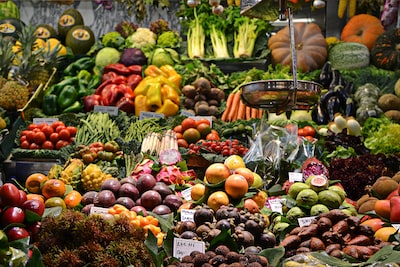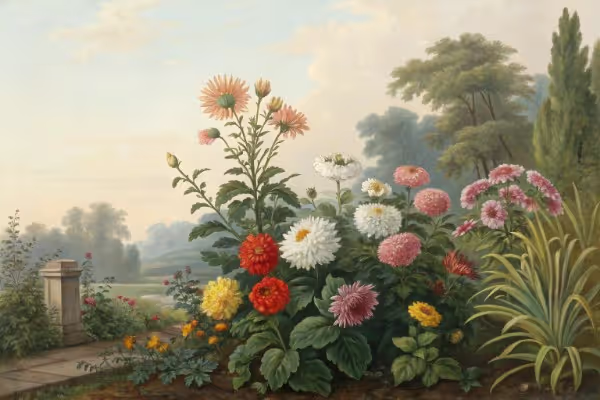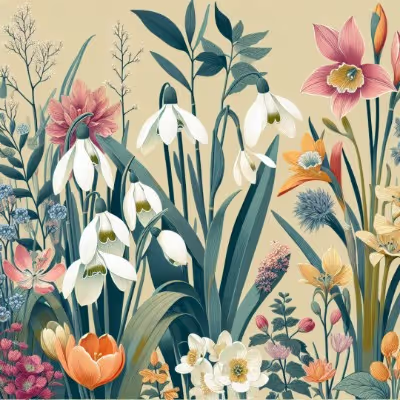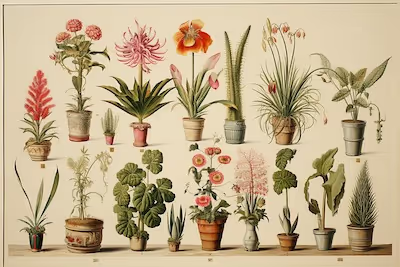Garden Pots for Growing Vegetables in Compact Spaces
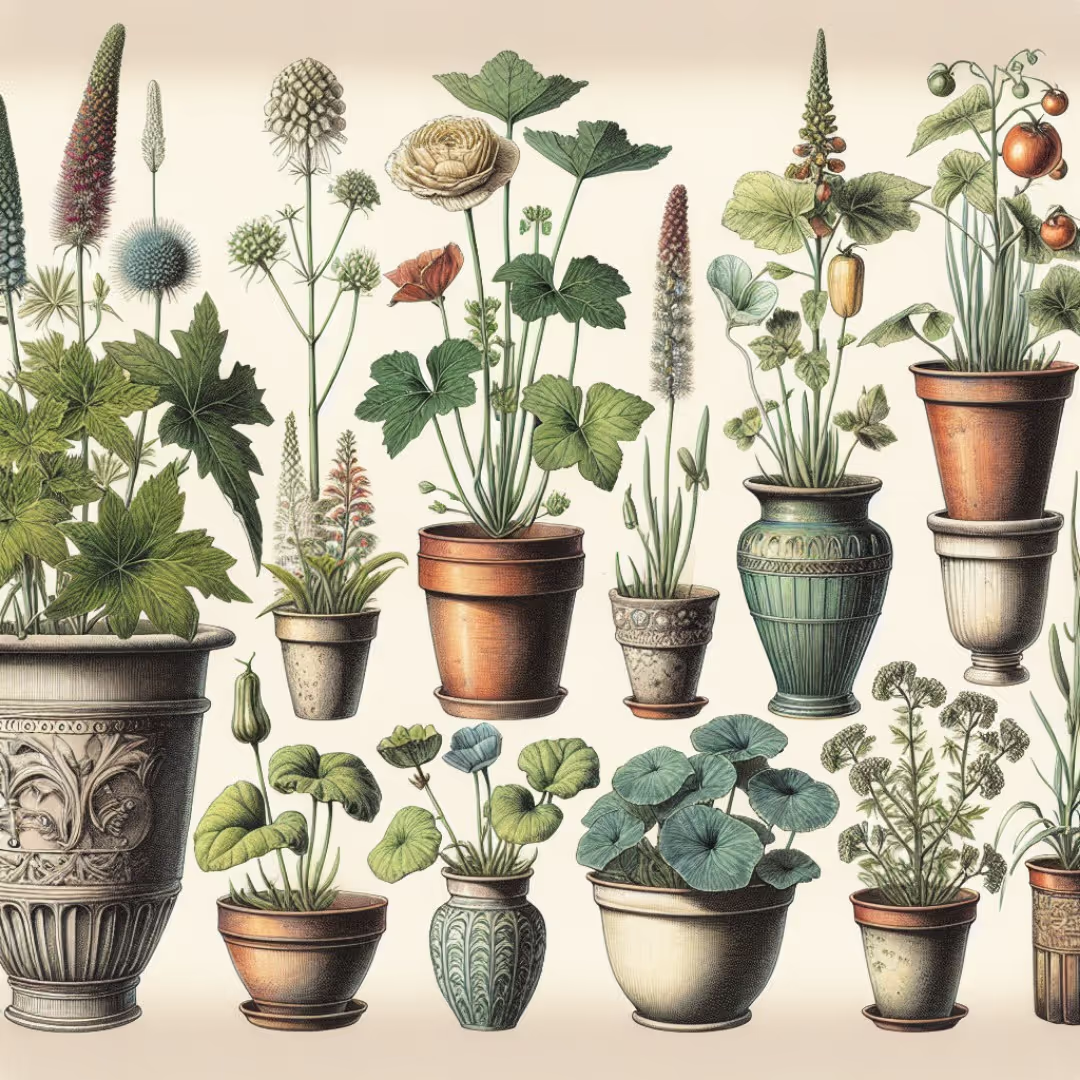
Garden pots for growing vegetables
Garden pots for growing vegetables let you cultivate fresh produce in tight spaces, turning patios, balconies or urban nooks into thriving veggie spots. Choose spacious pots with proper drainage holes, fill them generously with rich, organic potting soil, and select compact vegetable varieties suited for containers. Regular watering and ample sunshine will keep your edible pots thriving. Here's how you can transform modest containers into a personal harvest haven.
Cheatsheet: Compact Vegetable Growing in Pots
🌱 Best Veg to Grow
- Leafy greens: lettuce, spinach, arugula
- Herbs: basil, parsley, cilantro
- Root crops: radish, baby carrots
- Dwarf tomatoes, peppers, bush beans
🪴 Ideal Pot Size & Materials
- Depth: 6-12 in / 15-30 cm (leafy), 12+ in / 30+ cm (tomatoes, peppers)
- Width: 10-18 in / 25-45 cm (small batch, single plant)
- Material: clay (breathes), fabric (prevents root rot), plastic (lightweight)
- Always drain holes
🔧 Tools and Products You'll Need
- Potting mix (not garden soil)
- Organic fertilizer or compost
- Watering can or drip bottle
- Mulch (shredded leaves/straw)
- Labels
- Small trowel
- Plant saucers or trays
- Scissors/pruners
🌞 Pot Placement
- Minimum: 6 hours full sun
- South/east-facing for best yield
- Rotate pots for even growth
💧 Water & Feeding
- Water when top 1 in / 2.5 cm is dry
- Fertilize every 2-3 weeks (half strength for herbs/greens)
- Mulch to limit evaporation
🥕 Harvest Tips
- Pick greens small for best flavor
- Harvest root veggies early for tender texture
- Snip herbs often to encourage new growth
🛡️ Pest & Disease Control
- Space pots for airflow
- Check undersides of leaves weekly
- Use neem oil for aphids/mites
🥗 Nutrition & Health
Fact: Potted greens deliver up to 90% of daily vitamin K and vitamin C needs per cup. Homegrown saves $$, reduces grocery runs, and slashes pesticide intake.
🪜 Steps to Get Started
- Choose pot and prep with potting mix (add drainage).
- Sow seeds or transplant starts, water gently.
- Place in full sun, rotate pots each week.
- Feed, water, and mulch as crops grow.
- Harvest frequently, replant for continual yield.
I grow heavy feeders on a fifth-floor balcony and a narrow stoop, so every pot needs to earn its keep. Small footprint, big harvests, zero nonsense.
Mobility lets me chase light, dodge wind, and slide crops under a roof during storms. I also stack seasons faster, swapping lettuce for peppers the same day a cold front passes.
Soil control cuts disease pressure and compaction, and I can tune pH and fertility for each crop. That control translates to cleaner roots, fewer pests, and reliable flavor.
“Most vegetables need 6 to 8 hours of direct sun, and containers dry rapidly in warm weather.” RHS, Container Gardening Guidance
I’ve trialed clay, plastic, fabric, wood, metal, and glazed ceramic in heat that bakes concrete to 120 F 49 C. Each behaves differently under stress.
- Terracotta: porous and cooling, great in mild summers. It sheds moisture fast, so I upsize volume or mulch thickly by 1 inch 2.5 cm in July.
- Plastic: light, durable, steady moisture. I favor UV-stable, food-grade options in light colors to limit root temps.
- Fabric grow bags: air pruning prevents circling roots and boosts oxygen. They drink more, so I pair with drip and a top mulch.
- Glazed ceramic: moisture stable and handsome, though heavy. I use these for perennials, citrus, and patio eggplant.
- Wood: cedar or larch lasts, lines well, and stays cool. I drill generous drainage and set on feet for airflow.
- Metal: thin gauge heats fast; thick, insulated inserts behave better. Galvanized steel is fine for edibles if the mix stays near neutral pH.
Garden pots for growing vegetables need volume to buffer heat and feed roots. I learned to go one size larger than the internet says, then water less often and harvest more.
- Tomato: 10 to 15 gal 38 to 57 L for indeterminate, 7 to 10 gal 26 to 38 L for compact or determinate.
- Bell or hot pepper: 3 to 5 gal 11 to 19 L per plant.
- Eggplant: 5 to 7 gal 19 to 26 L.
- Cucumber, bush type: 5 to 7 gal 19 to 26 L with a trellis.
- Bush beans: 3 to 5 gal 11 to 19 L for 3 to 5 plants.
- Lettuce, spinach, arugula: 6 to 8 inch depth 15 to 20 cm, wide bowls produce beautifully.
- Carrots, round or short: 10 to 12 inch depth 25 to 30 cm. Long types need 14 inch 36 cm.
- Potatoes: 10 to 15 gal 38 to 57 L grow bags, roll down early, roll up as stems elongate.
- Herbs: 1 to 3 gal 4 to 11 L each, except basil which loves 3 to 5 gal 11 to 19 L for steady growth.
- Strawberries: 8 inch 20 cm deep, wide and shallow works best.
“Use a high quality potting mix, not garden soil, to avoid compaction and disease.” University of Minnesota Extension, Containers
Drainage first: at least 0.5 inch 12 mm holes, roughly one per 6 inch 15 cm of diameter. I add a riser grid or pot feet to keep outlets clear.
Self-watering planters SIPs with a capillary reservoir keep root zones evenly moist and tame heat spikes. My peppers in SIPs out-yield top-watered pots by a third in August.
Mulch the surface with 0.5 to 1 inch 1 to 2.5 cm of compost, straw, or pine fines. Evaporation slows, roots stay cooler, and water intervals stretch.
Fertilizer: I charge the mix with a slow-release 3 to 4 month prill, then spoon-feed a balanced liquid 1 to 1.5 mS cm EC every 7 to 10 days in peak growth. Monthly, I flush to drain to prevent salt creep.
pH target sits around 6.0 to 6.8 for most vegetables. I add garden lime for peat-heavy mixes and a touch of Epsom salt to support peppers if leaves pale between veins.
Staking and trellising go in on planting day. I like 8 foot 2.4 m bamboo or a compact steel frame tied with soft tape.
Wind management matters on balconies. I cluster pots to create a low windbreak and tie tall crops to fixed anchors.
This holds air in swelter and wicks water evenly. It also resists compaction over a long season.
- 60 percent peat or coco coir, pre-wet with warm water.
- 30 percent screened compost, mature and herbicide-safe.
- 10 percent perlite or pumice for drainage, plus a handful of coarse sand for carrots and radishes.
- 2 to 4 tablespoons 30 to 60 ml dolomitic lime per 5 gal 19 L if using peat or coir.
- Slow-release organic or synthetic fertilizer labeled for containers, mixed at label rate.
“Container media must be porous, lightweight, and disease-free for reliable results.” UC ANR, Container Gardening
I water early, aiming for full saturation until 10 percent drains out. In 95 F 35 C heat, fabric peppers need daily water, while large glazed pots often skip a day.
Drip with 2 L h emitters gives me deep, even moisture without leaf splash. Saucers help in heat waves, but I empty standing water after the midday peak to keep oxygen high.
I use light-colored pots to keep roots under 95 F 35 C in July. Dark pots run hot beside brick, so I shade the container wall with a scrap of cardboard or a wrap of burlap.
Reflective walls throw usable light to leafy greens, and a white balcony floor bumps photosynthesis on overcast days. Afternoon shade rescues lettuce from bitterness in August.
Compact genetics save space without giving up flavor. These have earned reruns on my patio.
- Tomatoes: ‘Bush Early Girl’, ‘Patio Choice Yellow’, ‘Tumbler’, ‘Tasmanian Chocolate’, ‘Sun Gold’ on a 10 gal 38 L pot.
- Peppers: ‘Shishito’, ‘Mini Bell’, ‘Cayenne Slim’, ‘Habanada’ for aroma without heat.
- Eggplant: ‘Patio Baby’, ‘Fairy Tale’ for quick, steady fruit set.
- Cukes: ‘Spacemaster’, ‘Patio Snacker’, ‘Parisian Pickling’ with a short trellis.
- Greens: cut-and-come-again mixes, ‘Salad Bowl’, ‘Little Gem’, ‘Bloomsdale’ spinach in cool shoulder seasons.
Container tomatoes crave steady moisture to avoid blossom end rot, which is a water management issue more than a calcium shortage. I prune for airflow and remove lower leaves that touch the rim.
A weekly rinse under the leaves evicts spider mites in heat. Yellow sticky cards and a handheld vacuum keep whiteflies from settling in.
I avoid pots that stored chemicals, and I stick with food-grade plastics marked 2, 4, or 5. I skip creosote-treated wood and unknown railroad ties.
Galvanized steel leaches little at neutral pH and typical edible conditions, according to extension guidance. If I grow blueberries at lower pH, I use plastic or glazed ceramic instead.
- Pot feet or grids to keep drains open on flat concrete.
- Drip kit with a battery timer on a Y-splitter for set-and-forget watering during heat waves.
- Rolling caddies for 15 gal 57 L planters to chase seasonal light.
- Compact trellis panels and soft ties that do not girdle stems.
- Thermometer probe stuck 4 inches 10 cm deep to monitor root temps.
- Floating row cover for spring brassicas and summer sunscald on peppers.
I rotate three core types across my small spaces. Each covers a different job and price tier.
- Fabric grow bags 7 to 15 gal 26 to 57 L for tomatoes, peppers, and potatoes. Inexpensive, fold flat off-season, big yields with drip and mulch.
- Glazed ceramic cylinders 14 to 20 inch 36 to 51 cm for patio eggplant and citrus. Stable moisture and tidy look on a front stoop.
- Self-watering planters with 2 to 4 gallon 7.5 to 15 L reservoirs for fruiting crops in peak summer. They buy time on scorching afternoons and boost consistency.
I stack height with trellises and tiered stands, and I use wide low bowls for greens under tall crops. On a 6 by 3 foot 1.8 by 0.9 m balcony, I pull two tomatoes, six peppers, two cucumbers, and a weekly salad bowl from April to October.
Radishes or baby lettuce ride along in tomato pots for 30 days while the main crop roots in. After summer, I drop in cilantro, arugula, and tatsoi as nights slide to 50 F 10 C.
- How many gallons per tomato: 10 to 15 gal 38 to 57 L gives stable moisture and fewer splits.
- Hole count: at least three 0.5 inch 12 mm drains on anything over 12 inches 30 cm wide.
- Color: light pots run cooler; black fabric needs extra mulch or shade cloth in July.
- Soil: use a labeled potting mix, never topsoil. I refresh one third each season and re-amend with slow-release fertilizer.
- Watering target: consistent, deep, and early in the day. If leaves droop by 2 pm in full sun, increase volume or switch to SIPs.
My EarthBox-style SIPs cut midsummer watering visits by roughly 40 percent compared with identical plants in standard pots. Large volumes buffer heat swings and keep flavor tight on hot weeks.
“Container vegetables need regular feeding and even moisture for steady yields.” University of Missouri Extension
“Most crops prefer a slightly acidic media, pH 6.0 to 6.8, with ample drainage.” WSU Extension, Sustainable Landscapes
- Royal Horticultural Society, Container Gardening for Vegetables.
- University of Minnesota Extension, Growing Vegetables in Containers.
- UC Agriculture and Natural Resources, Container Gardening and Potting Mix Basics.
- University of Missouri Extension, Vegetable Gardening in Containers.
- Washington State University Extension, Horticultural Myths and Container Media.

Want smarter plant choices? 🪴
Frequently Asked Questions About Growing Vegetables in Containers
What size pots work best for vegetable growing?
The ideal pot size depends on the vegetable you select. Leafy greens and herbs thrive in pots around 8–12 inches (20–30 cm) deep, while larger vegetables, such as tomatoes and peppers, perform best in containers at least 16–20 inches (40–50 cm) deep. Giving plenty of room for roots promotes healthy growth and abundant yield.
What's the ideal material for vegetable containers?
Containers come in various materials, such as terracotta, ceramic, plastic, or fabric. Terracotta pots drain water efficiently, preventing root rot, but dry out quickly and require frequent watering. Plastic pots retain moisture longer, making them suitable for hot climates. Fabric grow bags encourage better aeration and healthier roots, ideal for vegetables sensitive to overwatering.
How often should container vegetables be watered?
Vegetables in containers typically require watering every 1–2 days, depending on weather conditions. Check the soil regularly by inserting your finger up to one inch (2–3 cm); if it feels dry, it's time to water. Consistent moisture encourages steady growth and prevents issues like blossom-end rot in tomatoes.
Do vegetables grown in containers require special soil or fertilizer?
Using a high-quality potting mix designed specifically for containers ensures good drainage, proper aeration, and optimal nutrition for vegetable growth. Additionally, apply a balanced organic fertilizer once every four weeks throughout the growing season to maintain vigorous, productive plants.
Can containers be reused season after season?
Containers can certainly be reused annually. Before replanting, thoroughly clean each pot with mild soap and water to remove debris, pathogens, or pests. Replace the potting mix annually to provide fresh nutrients and prevent diseases, ensuring optimal vegetable health each year.
How much sunlight is necessary for vegetables grown in containers?
Most vegetables flourish with at least 6–8 hours of direct sunlight daily. Position container vegetables in sunny locations, rotating the pots occasionally to ensure even sunlight exposure and balanced plant growth.
What vegetables grow best in containers?
Many vegetables thrive in containers, especially compact or dwarf varieties. Excellent choices include tomatoes (particularly cherry or patio varieties), peppers, cucumbers, spinach, lettuce, carrots, radishes, beans, and herbs such as basil, parsley, and chives. Selecting compact varieties offers substantial harvests even when space is limited.
Garden pots for growing vegetables make tight spaces work. Keep it simple. Match pot size to the crop; deep roots need depth, salad greens are fine shallow. Use a loose potting mix with compost, not yard soil; see soil for a vegetable garden. Protect drainage; raise pots on feet, water to the roots, mulch to steady moisture, and watch for root rot. Give plants honest sun, at least six hours; rotate containers and trellis climbers to save square footage. Feed little and often with balanced fertilizer; this guide to fertilizing plants helps. Choose compact or determinate varieties, succession sow, and keep a close eye for aphids and flea beetles; smart pest management beats panic.
Do these basics and your balcony turns into dinner. Pots, a hand trowel, some patience. Soil under the nails, flavor on the plate. That is the win.
The Money Saver's Guide to Vegetable Gardening in Pots
Repurpose Containers Wisely
- Buckets and bins: Wash thoroughly, drill drainage holes, and reuse as planting containers.
- Food-grade containers: Bakeries and restaurants give away sturdy 5-gallon (19-liter) buckets—perfect for tomatoes or zucchini.
- Wooden crates: Line with burlap to retain soil while allowing drainage.
Economical Potting Mix Formulas
- DIY blend: Combine equal parts compost, peat moss or coconut coir, and vermiculite. Saves up to 50% compared to commercial mixes.
- Bulk buying: Purchase compost and soil ingredients from local garden centers or farms to lower cost per cubic foot.
Vegetable Varieties for Compact Yield
- Continuous harvest: Loose-leaf lettuces, spinach, and chard regrow after cutting, offering multiple harvests per season.
- Dwarf cultivars: Choose miniature tomato and pepper varieties bred for small containers with high yields.
- Fast-growers: Radishes mature in 25 days; quick turnover ensures multiple plantings per pot per season.
Water-Saving Techniques
- Mulch containers: Add straw or shredded leaves around plants to minimize evaporation, reducing water needs by up to 40%.
- Self-watering planters: Use recycled plastic containers to create reservoirs beneath pots, watering roots efficiently.
Nutrition and Cost Benefits
- Freshness factor: Vegetables harvested immediately before eating retain maximum nutrients.
- Reduced grocery spending: Lettuce, herbs, and cherry tomatoes grown in containers cut grocery bills notably during peak season.
- Controlled organic methods: Growing at home ensures chemical-free produce, boosting health without higher store costs.
Find out which plants will thrive in your garden!
Answer a few fun questions and get custom plant recommendations perfect for your space. Let’s grow something amazing together!

start your season
